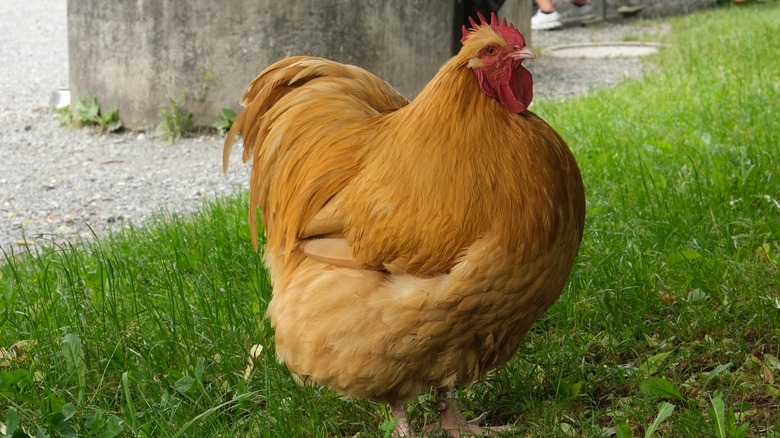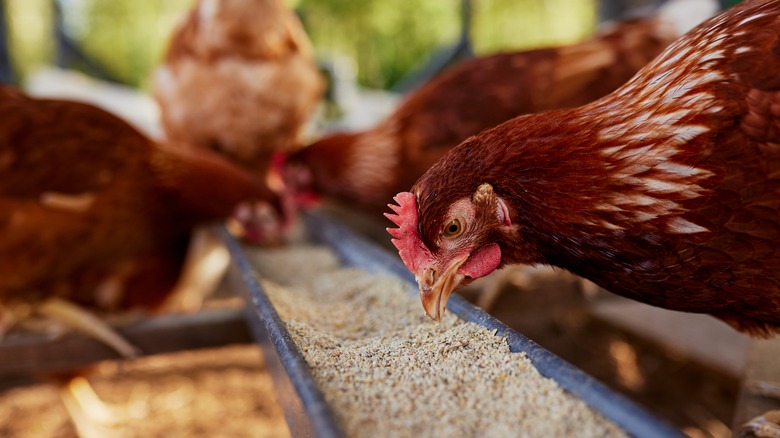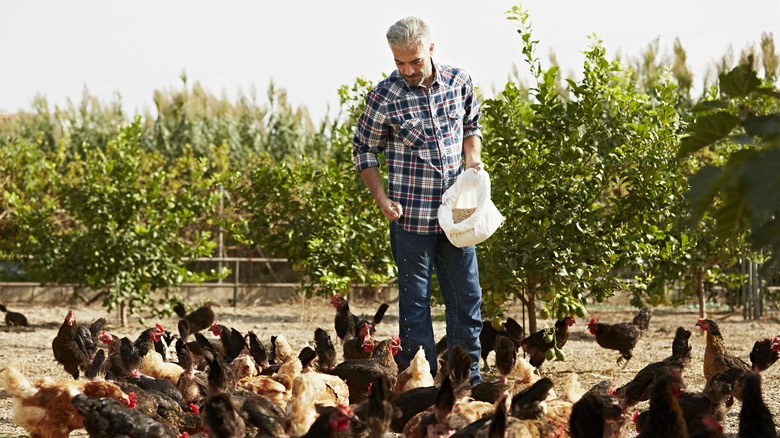Before Modern Additives, Chickens Were Plumped Up With Lizard Fat
Chickens held a special place in Roman society, serving as both culinary delicacies and sacred animals used in fortune-telling. If chickens ate food offered to them, it was considered a good omen; if they refused, it was a bad omen, once even resulting in a whole flock being angrily thrown overboard. Romans enjoyed elaborate chicken dishes, such as chickens stuffed with their own brains, showcasing the opulence of dining on these divinely-favored birds. To achieve plump and succulent chickens, they employed fattening techniques, including feeding them a mixture of cumin seeds, barley, and lizard fat. This concoction was believed to enhance the growth and flavor of chickens, producing a rich, fatty texture that was highly prized.
The use of lizard fat, although not extensively documented, was part of a broader Roman practice of utilizing a wide range of animal fats, including lion and bear fat, for various purposes such as medicinal and cosmetic applications. Animal fats are energy-dense, providing more calories per gram compared to carbohydrates and proteins, making them effective in promoting weight gain in livestock.
Other Roman methods for fattening up chickens
Aside from lizard fat, Romans employed other methods to fatten chickens. They soaked wheat bread in wine or milk to feed the chickens, resulting in especially flavorful birds. Nonetheless, this practice was eventually outlawed, as it was seen as morally dubious and overly indulgent. Additionally, households were soon limited to eating one whole chicken per day, provided it wasn't overfed.
When these laws were put into effect, Romans found a loophole. Chicken breeders got around this law by castrating roosters, causing them to grow larger and fatter due to hormonal changes that reduced their activity and increased fat storage. This practice introduced the concept of capons, which are castrated roosters known for their larger size, tenderness, and less gamey meat.
Capons are still eaten today, but you probably won't find them in your grocery store. They're more expensive and labor-intensive to produce, so you're more likely to see them at specialty markets. In countries like Italy, capons are a traditional part of Christmas meals, often roasted and stuffed with chestnuts. If roasting feels like too much effort, you can air-fry a whole chicken.
How are chickens plumped up today?
The chicken production industry has come a long way over time, with chickens quadrupling in size since the 1940s. Today, although nutrition still plays a role, genetic selection has been instrumental in the growth of broilers (chickens bred specifically for their meat). Think of it like how animals in the wild breed with those that have the strongest and most favorable traits to ensure their offspring's survival. Similarly, modern farmers choose to use the best broilers for breeding.
This process involves selecting chickens with desirable traits, such as growing well on less feed and resisting diseases, to parent the next generation. Over successive generations, these traits become more pronounced, leading to chickens that grow larger and more efficiently due to their enhanced genetic makeup. These selected chickens are then fed a balanced diet of grains like corn, proteins such as soybean meal, vitamins, and enzymes to support their growth without using hormones. Additionally, poultry farms control the temperature, humidity, and lighting to create optimal growing conditions. Imagine the look on ancient Romans' faces if they saw today's giant, juicy chickens.


